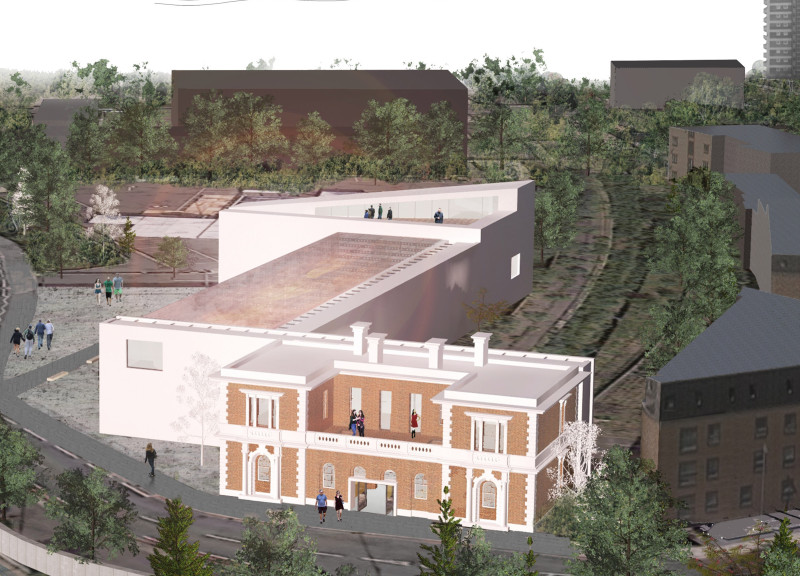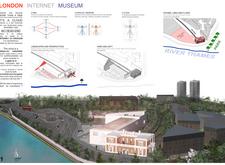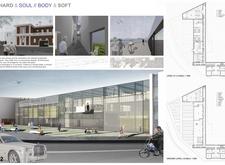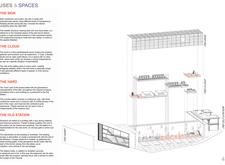5 key facts about this project
### Project Overview
The London Internet Museum is situated on the banks of the River Thames, adjacent to the historic Woolwich old station. This location provides a rich historical context that complements the contemporary architectural design intent. The museum aims to enhance visitor engagement with the digital universe, conceptualizing the internet as a physical "cloud" that embodies both information and an expansive environment.
### Spatial Strategy and User Interaction
The architectural design emphasizes themes of connectivity and adaptability. Key concepts, such as "the cloud" and "the web," are reflected in the museum’s layout, which prioritizes open, longitudinal spaces capable of accommodating diverse functions, including exhibitions, educational programs, and community gatherings. The fluidity of the design minimizes barriers, allowing for communal interaction and the free exchange of ideas.
Attention to ergonomics and adaptability informs the creation of spaces that are responsive to visitors’ needs and evolving technologies. This user-centric approach challenges conventional architectural forms, ensuring that the museum remains relevant in a rapidly changing digital landscape.
### Materiality and Contextual Integration
Material selection is integral to the museum's design, skillfully merging historical and contemporary elements. Polycarbonate panels and glass are utilized to create a double-skinned façade, enhancing transparency and facilitating natural light while connecting the structure to its riverside environment. The metal framework provides structural integrity, simultaneously referencing the site’s industrial past.
Concrete elements serve as a foundation that grounds the design in permanence, contrasting with the transient nature of digital experiences. The rehabilitation of the Woolwich old station further emphasizes a commitment to preserving historical architecture, integrating modern functionality while honoring local heritage.
Unique features include multi-functional spaces for educational and recreational activities, interactive technology demonstrations, and outdoor terraces that foster community engagement, reinforcing the museum's role as a cultural hub in the area.






















































